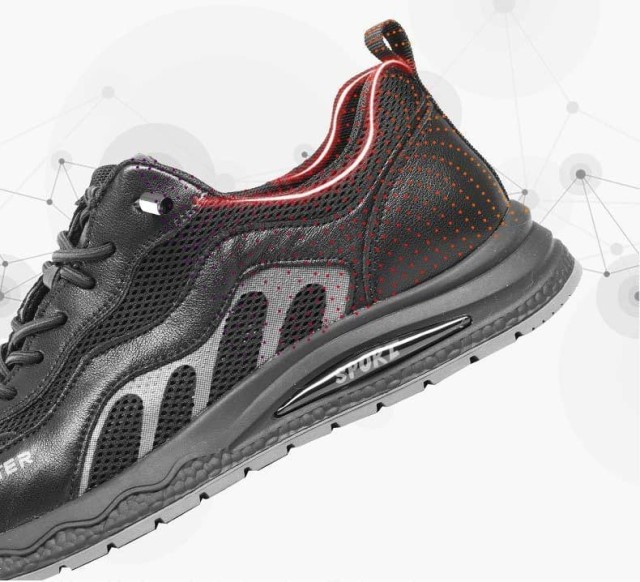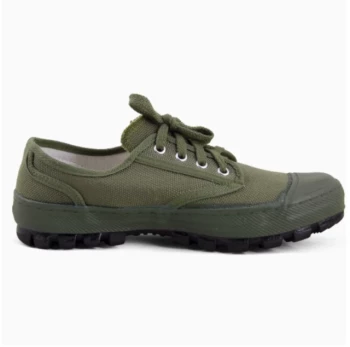Walking isn't just about comfort—your shoe's outsole determines how long your footwear lasts and how well it performs on different surfaces. Whether you're navigating city streets or mountain trails, understanding outsole materials and designs ensures you get the right support. Here's how material science and smart engineering create outsoles for every walking scenario.
Choosing the Right Outsole for Your Walking Lifestyle
Rubber Compounds: Carbon vs. Blown vs. Hybrid
Outsole rubber isn’t one-size-fits-all. The compound affects grip, durability, and flexibility:
-
Carbon Rubber:
- Highest abrasion resistance, ideal for heavy use (e.g., work boots or rugged hiking).
- Slightly heavier but withstands heat and rough surfaces better than other types.
- Research shows synthetic rubber blends (like carbon rubber) retain elasticity even in extreme temperatures.
-
Blown Rubber:
- Lighter and softer, offering superior cushioning for urban walking or running.
- Less durable on abrasive surfaces but provides better traction on smooth pavements.
-
Hybrid Designs:
- Combine carbon rubber in high-wear zones (like heels) with blown rubber for flexibility.
- Balances longevity and comfort for mixed-terrain walkers.
Did you know? The adhesive properties of rubber allow outsoles to bond securely with midsole foam, preventing delamination over time.
Tread Patterns: Pavement Grippers vs. Trail Conquerors
Tread depth and shape dictate traction:
-
Shallow, Tight Treads (Pavement):
- Spread pressure evenly for smooth surfaces.
- Reduce "stickiness" on floors while preventing slips.
-
Deep, Multi-Directional Lugs (Trails):
- Shed mud and grip uneven terrain.
- Wider spacing prevents debris buildup.
Hidden Durability Boosters: Flex Grooves and Rock Plates
-
Flex Grooves:
- Thin channels in the outsole improve natural foot movement, reducing fatigue.
- Critical for urban shoes where repetitive motion wears down stiff soles.
-
Rock Plates:
- Thin, rigid layers shield feet from sharp rocks or roots.
- Add minimal weight but significantly enhance protection for hikers.
Matching Outsole Features to Walking Scenarios
Urban Commuting: Prioritizing Flexibility and Weight
City walkers need outsoles that:
- Resist concrete abrasion (carbon rubber hybrids excel here).
- Offer subtle treads to avoid tripping on flat surfaces.
- Stay lightweight—blown rubber or hybrid designs prevent leg strain during long commutes.
Pro Tip: Look for flex grooves if you’re constantly on hard surfaces; they mimic barefoot movement to ease joint stress.
Long-Distance Hiking: Maximizing Traction and Protection
For trails, prioritize:
- Deep lugs (4+ mm) for loose dirt or wet rocks.
- Full-carbon rubber to handle sharp stones and prolonged use.
- Rock plates if traversing rocky paths—they disperse impact forces.
Research indicates that hikers on uneven terrain experience 30% less foot fatigue with rock-plated boots versus non-plated ones.
All-Terrain Versatility: Balancing Durability and Adaptability
Hybrid walkers (e.g., suburban trails + pavement) should seek:
- Moderate lug depth (2–3 mm) for transitional surfaces.
- Dual-density rubber—softer for grip, harder for longevity.
- Flex zones near the ball of the foot to accommodate varied strides.
Step Into the Right Footwear with 3515
Your walking environment demands outsoles engineered for its challenges. At 3515, we craft specialized rubber compounds and tread designs for distributors and brands needing bulk footwear solutions—whether it’s urban sneakers that last or trail boots ready for adventure. Partner with us to equip your customers with soles built for their journeys.
Final Thought: The best outsole isn’t just about durability; it’s about harmonizing science with your stride. What terrain does your next step demand?
Related Products
- Wholesale Customizable Suede Safety Boots - Puncture-Proof with Velcro Closure
- Durable Leather Work Boots Wholesale Manufacturer & Custom Factory
- Wholesale Durable 6-Inch Work Boots | Custom & Private Label Manufacturer
- Wholesale Smart Casual Sneakers with Dial Closure | Factory Direct Manufacturing
- Wholesale Durable Mid-Cut Tactical Boots for Custom & Private Label Brands
Related Articles
- How to Choose Work Boots That Match Your Job's Safety Demands
- How to Choose Work Boots That Match Your Industry's Safety Needs
- How to Choose Work Boots That Balance Safety, Comfort, and Durability for Your Job
- Matching Men’s Work Shoe Safety Technologies to Workplace Hazards
- Steel Toe Work Boots: Balancing Safety and Comfort for Demanding Jobs



















